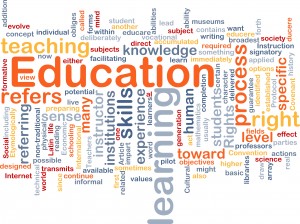 Teachers are leaders in their classes, but they are still impacted by their school leadership. Principals’ impact on teachers and their delivery and as a result students’ outcome and academic performance may be positive or negative.
Teachers are leaders in their classes, but they are still impacted by their school leadership. Principals’ impact on teachers and their delivery and as a result students’ outcome and academic performance may be positive or negative.
How can principals keep their influence positive and their teachers committed and engaged?
This is not an easy challenge for principals, but it is essential and can be achieved.
Here are a few elements that school leaders need to know and deliver. These elements come to be known as ‘currency’ because they function as an incentive and as a reward. This currency doesn’t have to be monetary or material.
To get the most out of their teachers, principals should keep in mind their teachers’ human and individual needs.
1. Sense of security
Create a safe and secure environment for trying new strategies and for asking questions.
As the leader you don’t have to have all the answers, in fact, expecting your teachers to be able to solve problems boosts their motivation.
- Trust
Show your staff that you trust and value their professional opinions by including them in decision making and implementation plans. Teachers buy in when they have been part of the planning.
- Inspiration
Teachers want good leadership that inspires, is decisive and knows when to include others in their decision making. Keep calm and inspire confidence and professionalism. The tone of voice the leader uses can transmit so many innovative thoughts and ideas.
- Recognition and Praise
Everyone responds to feeling valued and appreciated, but praise has to be genuine and sincere.
Acts of recognition are simple and are always motivational. Make it spontaneous and unpredictable so that teachers don’t become desensitized to it. At staff meetings, take a moment to recognize a teacher for something great he or she said or did in a classroom, hall, meeting, etc. Relate that action to one of the core values and to the mission of the school.
- Listening, paying attention and caring
Listen to teachers’ concerns. Provide them with solutions and allow them opportunities to take ownership of their role. Learn how to listen to your teachers by reading their emotions and acknowledging what they do well.
- Instructional Support
Support the teacher’s instructional effort, initiatives and student-centered strategies. Support is manifested through showing attention, being around, sharing the excitement and providing resources and a climate of collegiality. The more support you are to your teachers, the less work you have to do as a school leader because you build a community who works for your school and its mission.
- Teachers’ wellbeing
If a teacher comes to you with distress, drop everything and listen. Don’t judge. Express empathy and confidence, and ask how you can help. Be honest and warm.
- Feedback
If a teacher makes a mistake, address the way, method or action, not the person.
Teachers need clear and honest feedback on their teaching. They also need a subjective and positive constructive feedback. They want to hear it in a professional way from the leadership of the school and from their peers. Feedback motivates and inspires. Effective feedback is characterized by being an appropriate amount, given in a positive and constructive way, specific enough to provide a plan of action for the teacher to follow, and frequent. Timing of the feedback is also crucial to have maximum impact.
- Resources as rewards
Being the first to get a new technology for the classroom, being selected to attend a conference, being given time to plan, etc. is highly appreciated among teachers.
- Leading by example
When tasks are due, stay alongside your teachers and help! When the leader is in the room to help, lead, and facilitate, it becomes a true team effort. Lead by example, communicate, adopt a variety of leadership styles and don’t hesitate to take hard decisions and work on the basis of shared understandings and vision.

